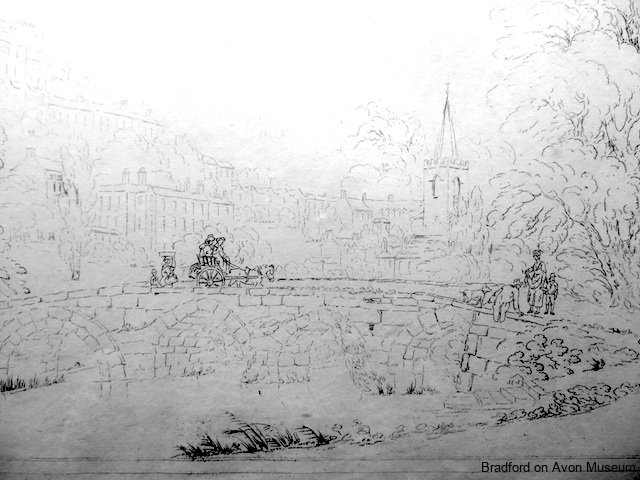.
John Claude Nattes
Topographical artist
Bradford on Avon, Wiltshire
.
John Claude Nattes (c1765-1839) was a topographical artist who recorded many parts of Britain in drawings and watercolours in the late Georgian Period. He was in Bath at the very beginning of the 19th century and made a series of drawings of the city which were turned into aquatint prints by John Hill (1770-1850) and published between 1804 and 1806 by William Miller of Albemarle Street in London as “Bath, illustrated by a series of views, with descriptions to each plate”.
While the majority of views are of Bath, he made an excursion to nearby Bradford on Avon, possibly following the then new Kennet & Avon Canal, perhaps travelling by the fast “fly boats”. Two of the aquaprints are in the collection of Bradford on Avon Museum, purchased with a grant from a fund administered by the Victoria & Albert Museum in London.

On his way to Bradford he drew the Dundas Aqueduct that carries the canal across the River Avon, completed in 1798, not long before. In the aquaprint, a sail of a barge that is taking advantage of a southerly wind can be seen on the far side of the aqueduct, the Winsley side of the river. Above that is the track of the inclined tramway that brought stone down from Conkwell Quarry to a wharf on the canal. The aqueduct was named after Charles Dundas (1751-1832), Baron Amesbury, who was Chairman of the Canal Company.

At Bradford, Nattes drew the downstream side of the medieval Barton Bridge, with Holy Trinity Church and buildings of the town beyond.

Subsequently Bradford on Avon Museum was given what may be the original drawing from which the aquatint plate was made.

